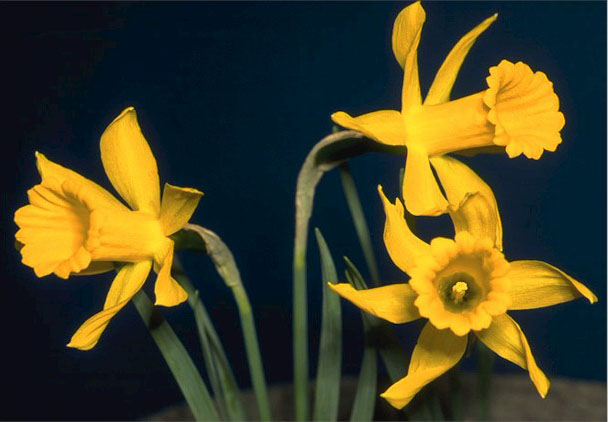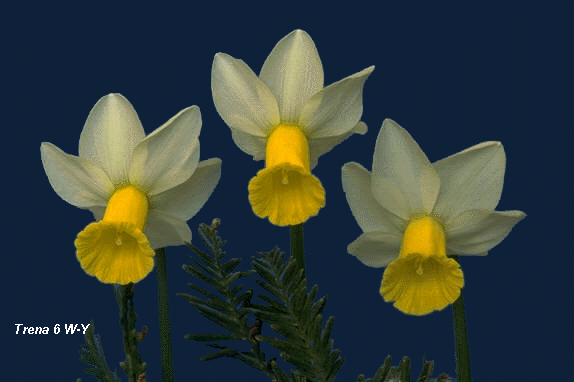 beauty.
beauty. Daffodils
By: Rachel Kraft
Daffodils are often refereed to as
Narcissus, named after the mythological
boy, Narcissus, who loved to admire his own beauty.
beauty.
Narcissus is actually the Latin name for Daffodils and also their genus name. Their species name is Narcissus pseudonarcissus. Either way you descibe this flower it is still one of the most loved garden bulbs.
One reason daffodils are so popular with gardeners is that their "bulbs and leaves contain poisonous crystals" which keeps away the rodents and squirrels. A second reason daffodils are popular is that there are over 13,000 types of hybrid daffodils within 25 species . There are thirteen descriptive daffodil divisions, each one having its own characteristics . These can be found at, http://www.daffodil.org/daffodil/div.htm. A third reason daffodils are so popular is that daffodils multiply both asexually and sexually, or in other words, by bulb division and by seed. Although reproduction by seed is a timely process it is still used by some growers.
Daffodils, native to northern Europe, can be grown in almost all zones, but the hardiness of the plant depends on the ancestry of each bulb. Daffodils should be planted in the fall before the first frost, usually when the ground temperature reaches 60-65 degrees Fahrenheit. This is due to the cold temperature needed by the bulbs during the winter to promote root development and to get ready for flowering in the spring. Daffodils prefer a well drained, slightly acidic soil, usually on a hillside or a raised bed because drainage is real important, otherwise the bulb may rot. They also prefer a sunny place, but can thrive in part sun. Depending on the zone in which you live and the classification, daffodils will blossom sometime between the begining of March and middle of May. They are usually one of the first flowers seen in the spring time.
For more growing and planting techniques check out: http://www.daffodil.org/daffodil/growingtips.htm

A daffodil flower consists of two regions the perianth (petals) and the corona (cup). The corona makes the daffodil unique from many other flowers, and attractive to the eye. This cup or trumpet like corona is the most interesting part of the flower with its frilled edges and contains the stamens. Daffodils can have either short or long slender stems, usually 16 inches in length, which are fleshy and light weight. The light green foliage of these plants grows from the bulb and is about 12 inches in length.
Now that you have learned some interesting facts about Daffodils, including their origin, growth habitats, planting instuctions and the parts of the flower, you can enjoy the beauty of daffodils in your own home and garden. Also, there are many daffodil shows through out the United States and European countries to check out and enjoy without doing any work.
This website is in conjunction with Dr. Chiwon Lee's Horticulture lab (Plant Science 211).
http://www.ndsu.nodak.edu/instruct/chlee/plsc211
Short cupped Daffodils - Achduart.........................Poeticus Daffodils-Cantabile ..............................Double Daffodil-Dorchester
Refferences and Corresponding sites:
1. http://www.daffodil.org/daffodil/answers.htm
2. http://www.daffodil.org/daffodil/div.htm
3. http://www.oldhousegardens.com/daffodil.html